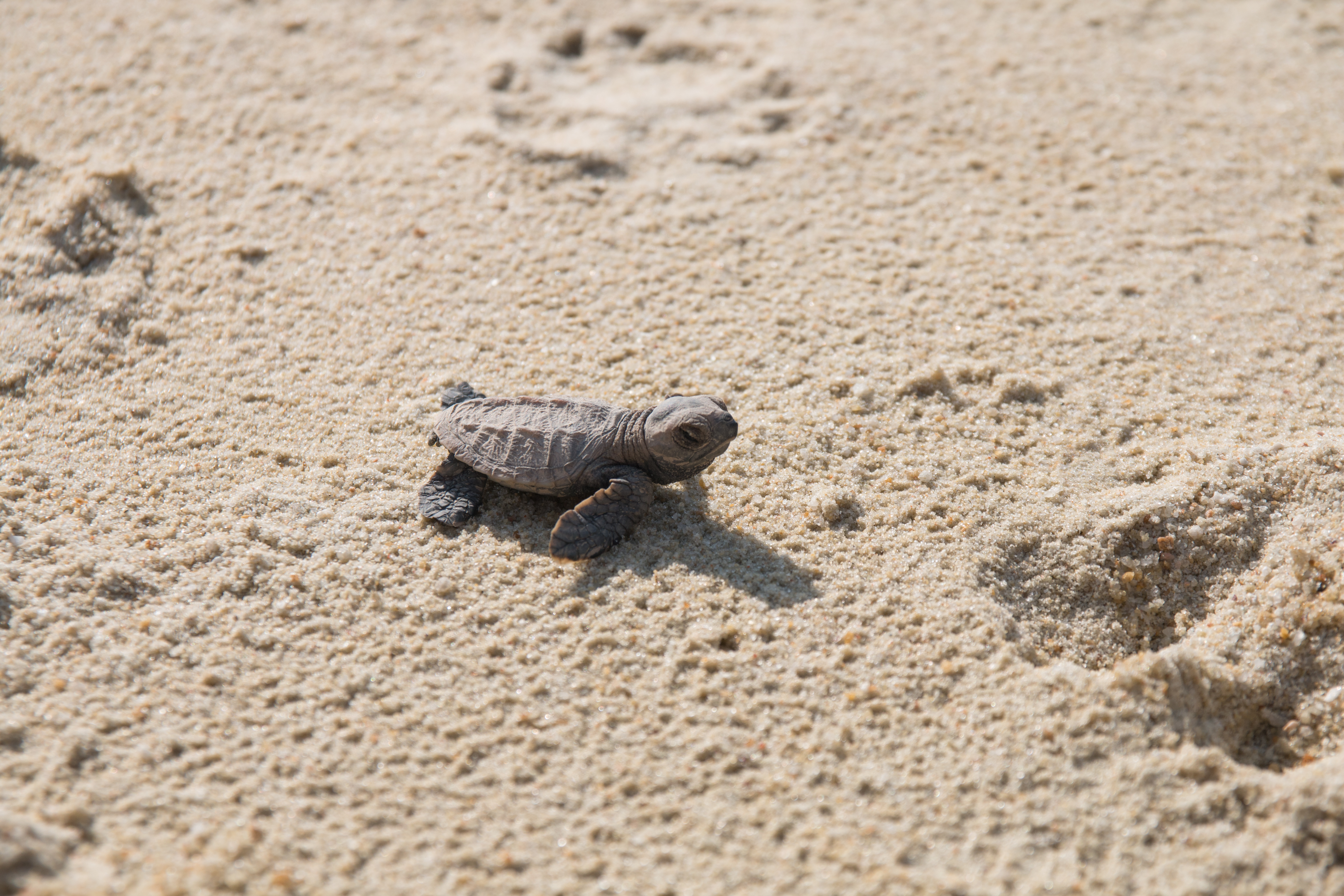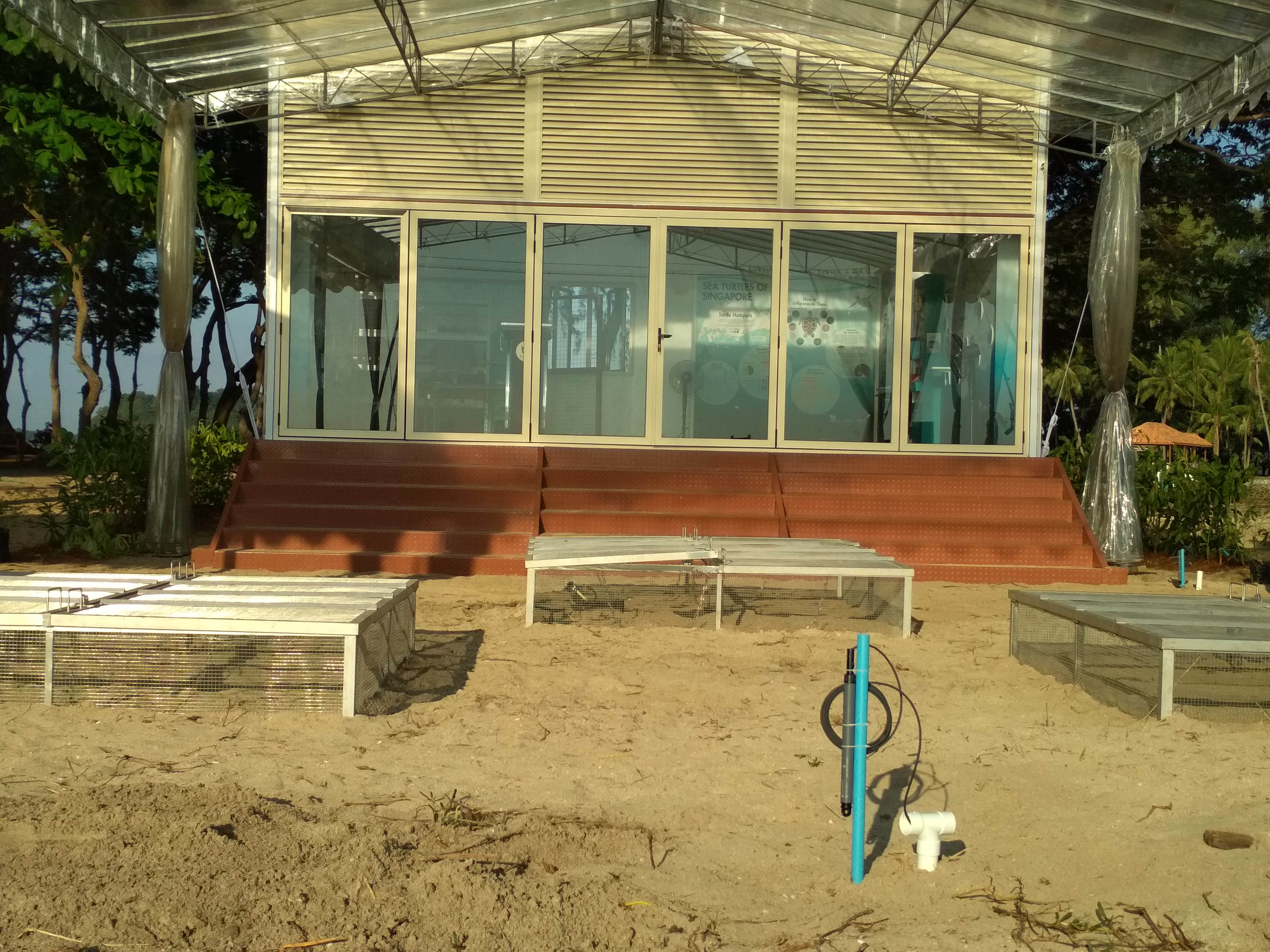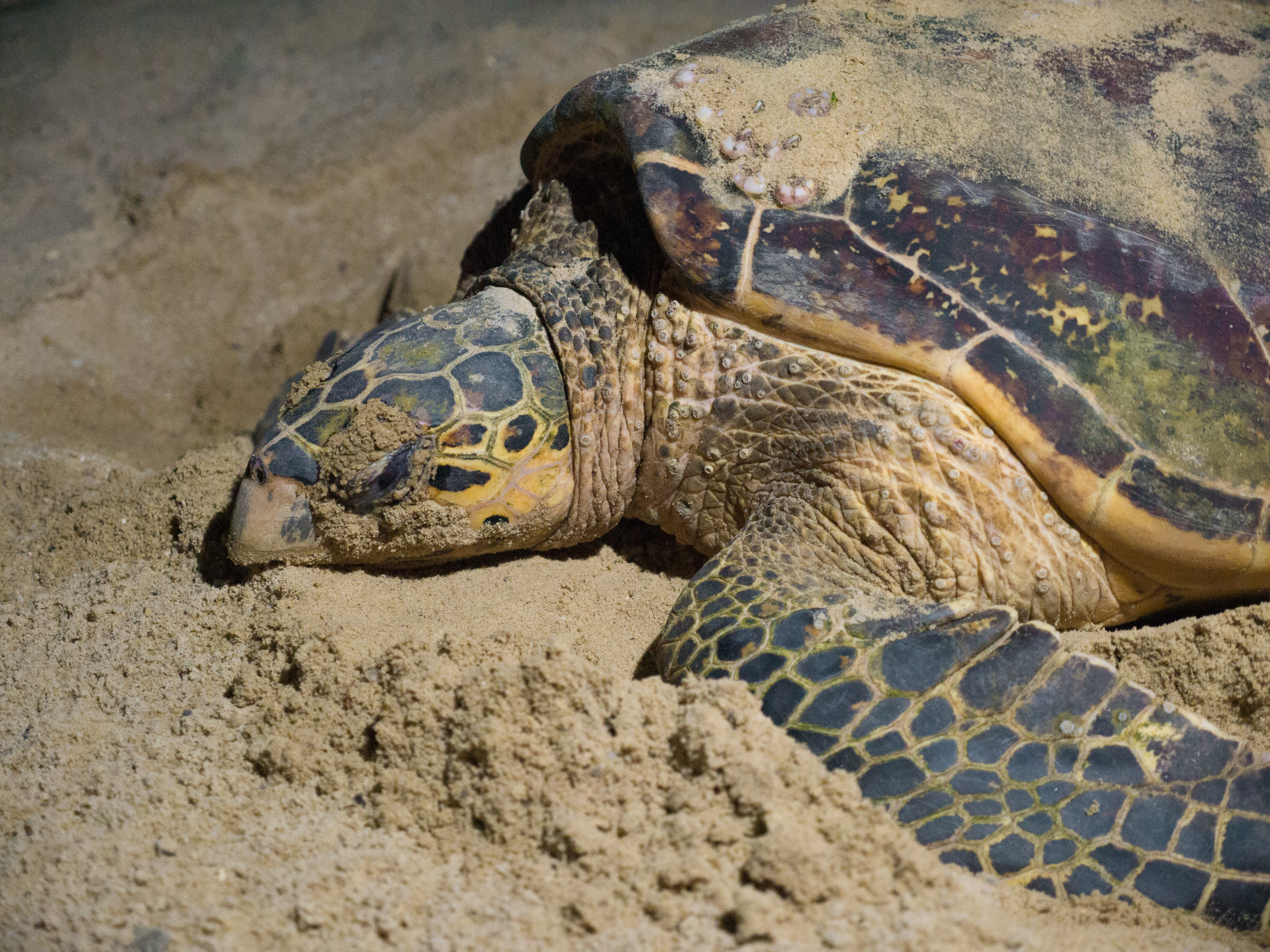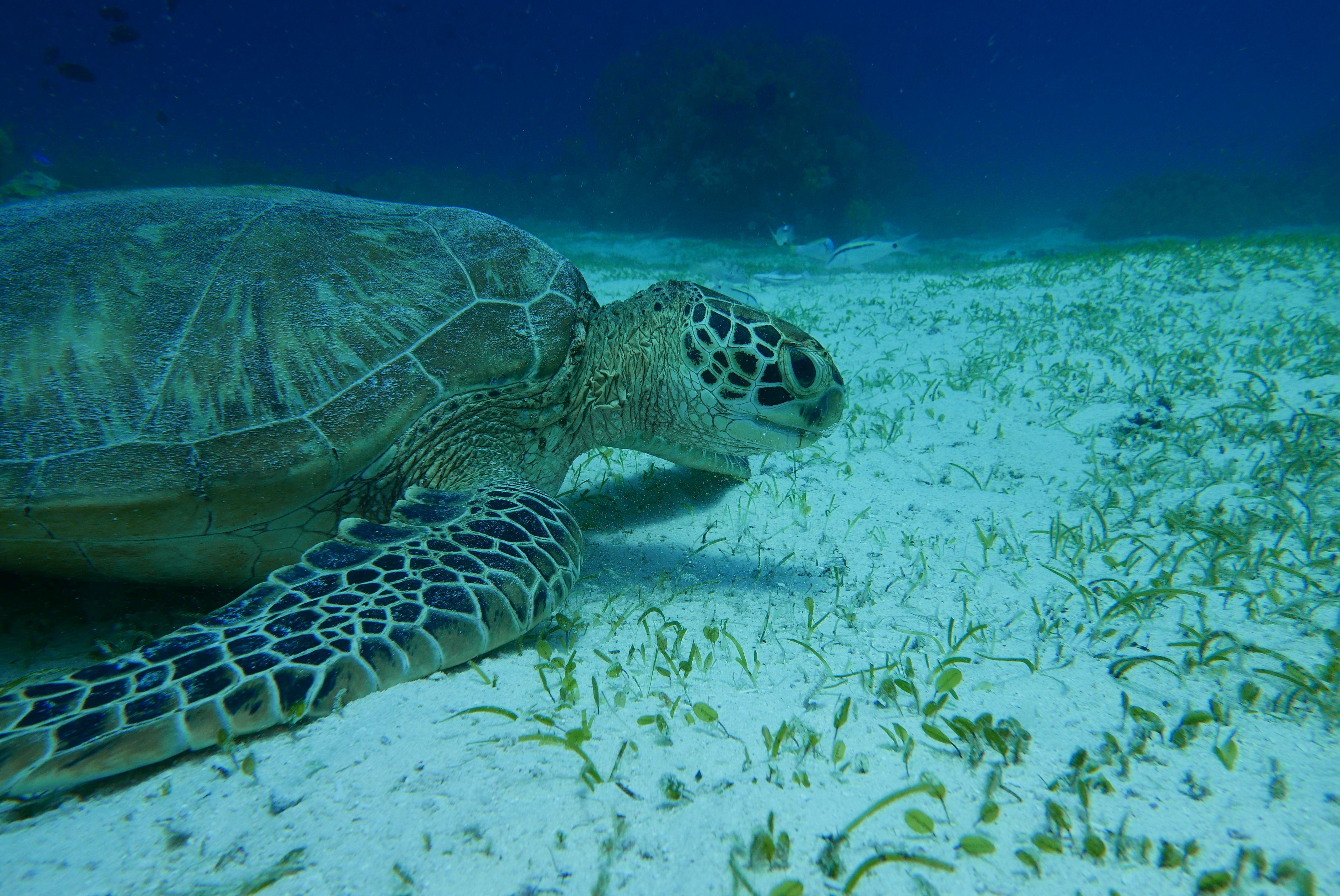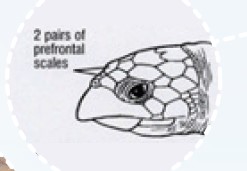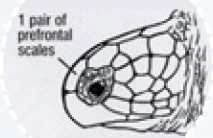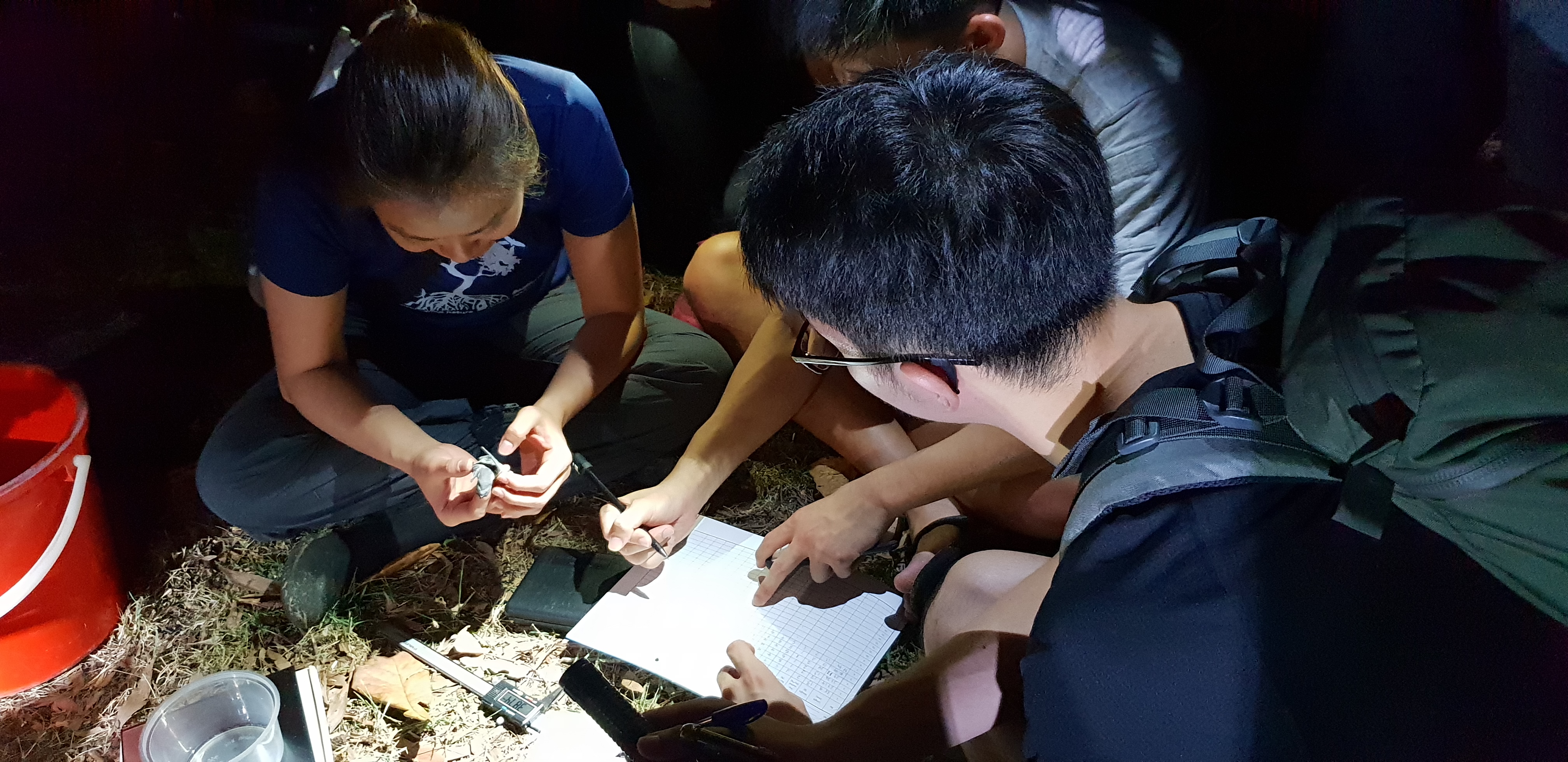Caption: The Hawksbill Turtle (left) and Green Turtle (right) are the two species of turtles you can find in Singapore.
Photo credit: Max Khoo and Karenne Tun
There are two species of turtles that call Singapore home – the Hawksbill Turtle (Eretmochelys imbricata) and Green Turtle (Chelonia mydas). With only a handful of turtles from each clutch of between 100 and 150 eggs surviving till adulthood, locating the hatchery along the shores of the protected Sisters’ Islands Marine Park plays a crucial part in increasing their chances of survival.
Small Sister’s Island is an ideal location because it is centrally sited between East Coast Park and the rest of the Southern Islands, where the majority of turtle nesting activities have been recorded since 2005.
Most of the nests that are transferred to the hatchery are at risk from human disturbance or predators like monitor lizards. They are relocated to the island, where they can be incubated naturally and without disturbance.
Other threats to turtles include:
Marine trash and plastics – Over 1,000 turtles die annually as a result of either entanglement or ingestion of marine debris and plastics. Turtles often mistake balloons and plastic bags for jellyfish and consume them.
Fishing equipment – Turtles can drown when they are unable to surface to breathe after being trapped by fish nets abandoned in the waters. They are also victims of by-catch of fishing trawlers, where they are accidentally caught in the net when fish are being harvested.
Boat strikes – Turtles are vulnerable to boat strikes when surfacing to breathe at places with high boat traffic, such as popular dive destinations.
Light pollution – Turtle hatchlings naturally head towards the sea, guided by the light from the horizon. Light pollution from street lights may disorient them, causing them to head in the wrong direction.
Differentiating the Hawksbill and Green Turtle
The Hawksbill and Green Turtles are the most commonly sighted sea turtles in Singapore. They have been observed foraging, resting or nesting on our reefs and beaches. Satellite tracking by other countries has revealed that turtles nesting as far away as Malacca in Malaysia and the Gulf of Thailand visit our reefs.
Hawksbill Turtle
> Sharp and hooked beak
> Two pairs of prefrontal scales




